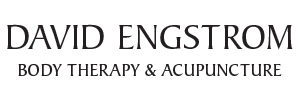Acupuncture & Structural Integration for Pain Relief
Understanding Chronic Pain and Its Impact on Your Life
Living with chronic pain can feel like a never-ending cycle of discomfort, fatigue, and frustration. Whether it’s back pain, joint stiffness, or muscle tension, pain doesn’t just affect your body—it takes a toll on your mood, energy, and overall quality of life.
What if you could address the root causes of your pain, not just the symptoms? Acupuncture and structural integration offer a holistic approach to lasting pain relief and improved well-being.
How Acupuncture Provides Natural Pain Relief
Acupuncture is a time-tested therapy that works by stimulating specific points on the body to promote healing, reduce inflammation, and relieve pain.
Stimulating Your Body’s Natural Healing Processes
When needles are applied to acupuncture points, they activate your body’s natural pain-relief mechanisms, including the release of endorphins and improved circulation. This helps reduce inflammation and speed up recovery.
Calming the Nervous System
Acupuncture helps calm the nervous system, which is often in overdrive when you’re dealing with chronic pain. By reducing stress and tension, it creates the ideal conditions for healing.
Targeting the Root Causes of Pain
Unlike temporary fixes like painkillers, acupuncture focuses on addressing the underlying imbalances that contribute to chronic pain, offering lasting results.
What Is Structural Integration?
Structural integration, also known as Zen Bodytherapy™, is a hands-on therapy that focuses on aligning the body’s structure to relieve pain and improve movement.
Realigning Your Body for Better Function
Chronic pain often stems from misalignments in your posture and movement patterns. Structural integration works to release tension and restore balance, making everyday activities easier and more comfortable.
Improving Posture and Mobility
By addressing tension in the fascia (connective tissue), this therapy helps improve your posture and increase your range of motion, reducing strain on your body over time.
Supporting Long-Term Pain Relief
When combined with acupuncture, structural integration enhances the overall effectiveness of pain relief by addressing both the structural and energetic components of your body.
The Synergy of Acupuncture and Structural Integration
Acupuncture and structural integration work together seamlessly to provide comprehensive pain relief.
Acupuncture addresses pain at the energetic and systemic level, reducing inflammation and promoting healing.
Structural integration targets the physical structure, improving alignment and mobility.
Together, they create a powerful synergy that helps you move better, feel better, and live pain-free.
Personalized Care for Your Unique Needs
Every person’s pain story is different, which is why I tailor treatments to your specific needs. Whether you’re recovering from an injury, managing chronic pain, or simply looking to feel better in your body, acupuncture and structural integration can help you achieve your goals.
Benefits of Acupuncture and Structural Integration for Pain Relief
Here’s what you can expect when you combine these therapies:
Reduced pain and inflammation: Feel relief that lasts longer than quick fixes.
Improved posture and alignment: Move with greater ease and comfort.
Enhanced energy and well-being: Pain no longer drains your focus and vitality.
Personalized results: Treatments designed specifically for your body and lifestyle.
Ready to Relieve Your Pain Naturally?
Imagine waking up free from chronic pain, moving effortlessly, and feeling energized throughout the day. Acupuncture and structural integration can help you achieve that.
Take the first step toward lasting relief. Schedule a free consultation today and discover how these therapies can transform your health and well-being.

